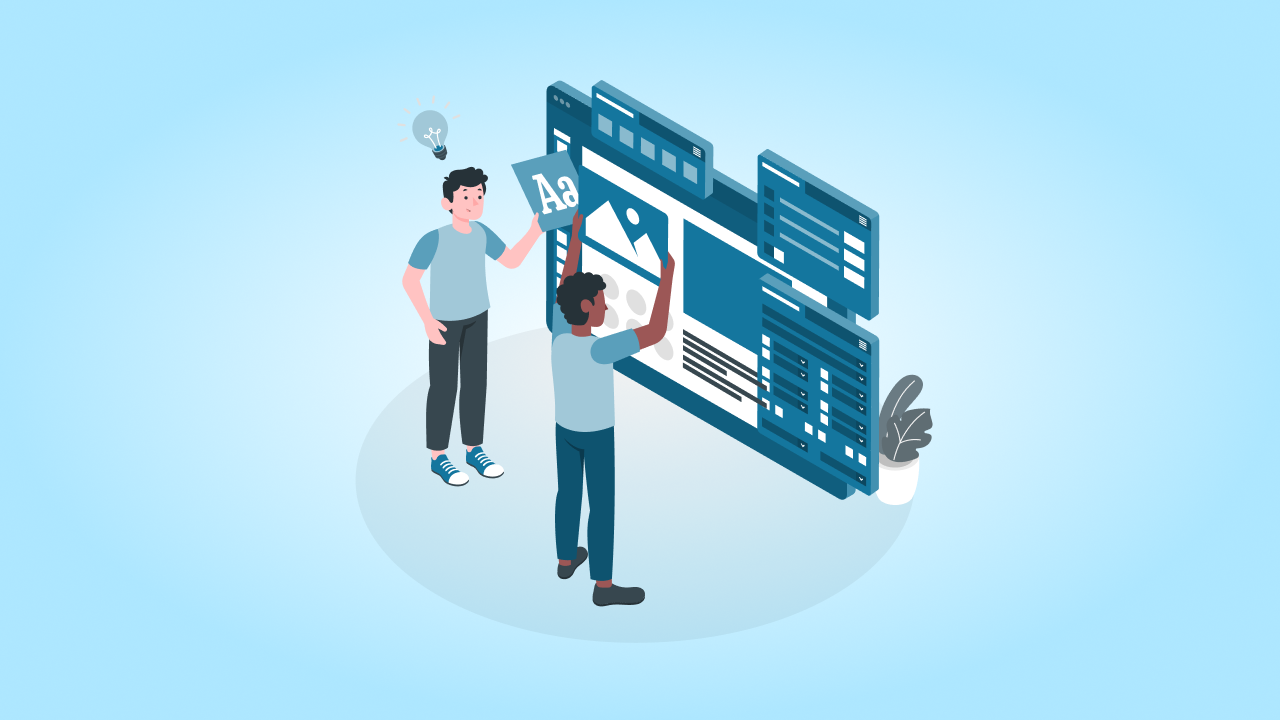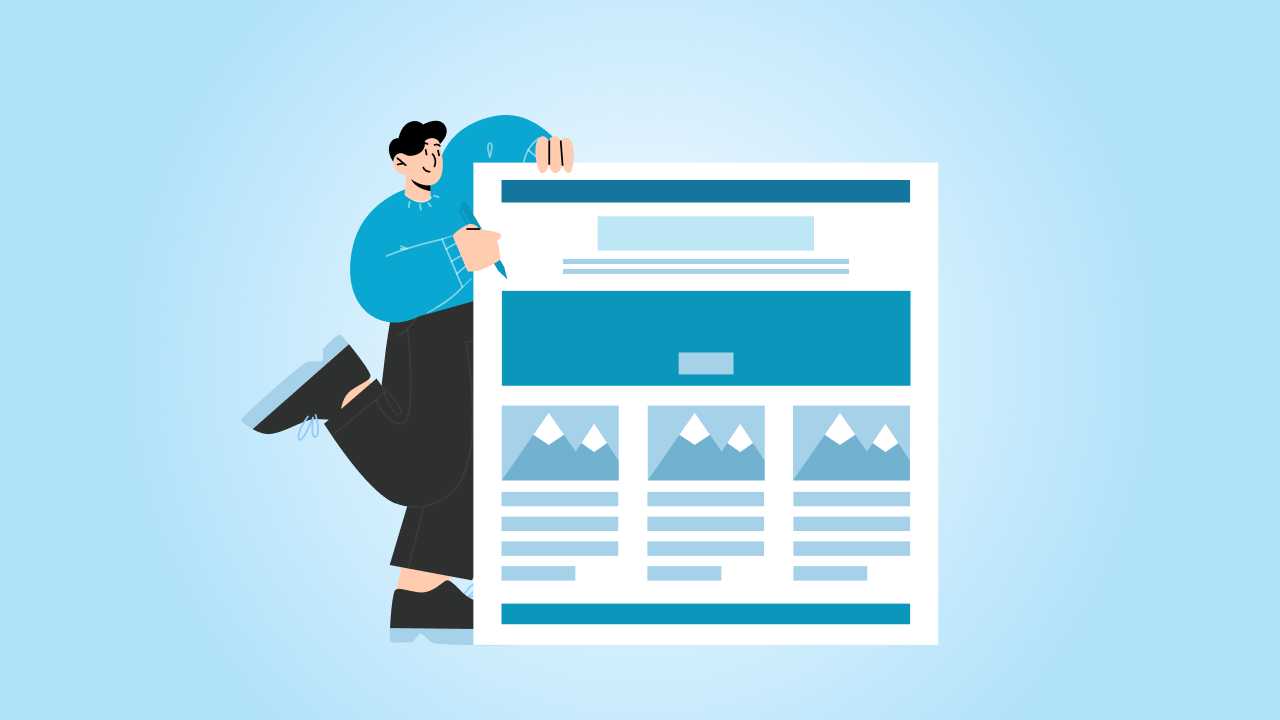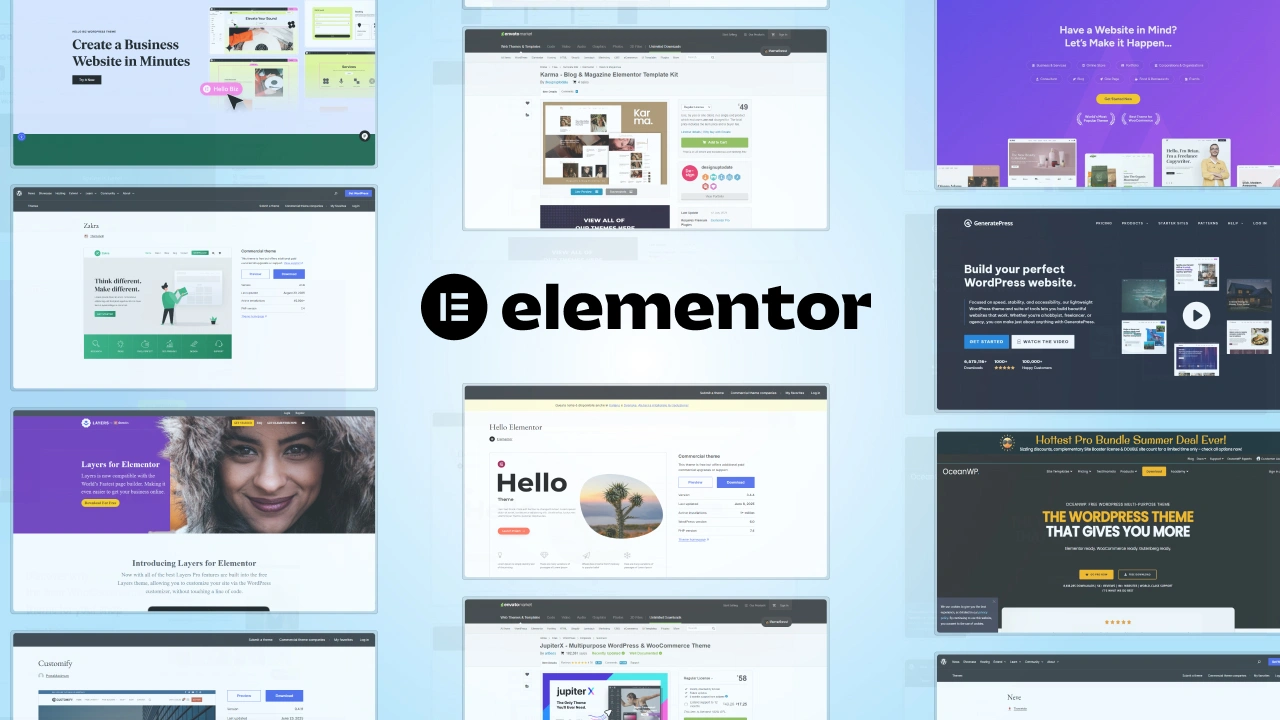Redesigning a website is more than just giving it a fresh coat of paint. As an experienced digital growth strategist, I’ve seen firsthand how a well-executed website redesign can transform a business-boosting user engagement, improving conversions, and aligning the site with current branding and technology trends.
However, a successful redesign doesn’t happen by accident. It requires careful planning, clear goals, and a deep understanding of user needs.
This guide cuts through the fluff and gives you 10 actionable steps for how to redesign a website. Whether you are updating your site’s design, enhancing functionality, or optimizing for search engine, these steps will provide you with the roadmap to execute a seamless and impactful redesign.
By the end of this post, you will have a clear understanding of what is website redesign and the necessary actions to take, from initial planning to post-launch monitoring, backed by industry-tested strategies that will help you achieve your specific goals.
What is a Website Redesign?
A website redesign refers to the process of revamping or overhauling an existing website’s design, structure, and content to improve its functionality, user experience, and overall effectiveness. It’s not just about making your site look more modern or visually appealing—it’s about making it work harder for your business or personal brand.
Different Types of Website Redesigns:
- Cosmetic Redesigns: These focus primarily on the visual elements of a site—like updating color schemes, typography, images, and overall layout—while keeping the site’s structure and functionality largely the same. This is ideal when your website looks outdated but still serves its intended purpose well.
- Full-Scale Redesigns: This involves a complete overhaul of a website’s design, content, and even backend infrastructure. You might change the structure, navigation, user flow, content strategy, and integrate new technologies. Full redesigns are often necessary when your site is not performing well, isn’t optimized for mobile, or when your business model or brand has evolved.
When Should You Consider a Website Redesign?
Several factors might indicate it’s time to redesign your website:
- Outdated Design: Your website may look like it’s stuck in the early 2000s, which can hurt your credibility.
- Poor User Engagement: High bounce rates, low conversions, or difficulty navigating can signal that the user experience (UX) needs improvement.
- Mobile Optimization Issues: With mobile traffic accounting for a large share of internet usage, a site that isn’t optimized for mobile devices will drive users away.
- Slow Load Times: Page speed is a critical factor for SEO and user satisfaction. Slow-loading pages may cause visitors to leave before the site even fully loads.
- Difficulty Maintaining the Site: If your website is built on outdated technology or is difficult to update, it’s time to look at modern solutions that allow for easier maintenance and content management.
- Business or Branding Changes: As your business evolves, your website should reflect these changes in its design and messaging.
Now that we have covered our basics, let’s jump straight into the process of a website redesign.
Our team is here to guide you every step of the way, from strategy to execution.
How to Redesign a Website (10 Easy Steps)
As I said, there would be no beat-around-bush content here. So I’ll be on point. Redesigning your website isn’t a guessing game. It requires a structured, strategic approach to ensure the outcome is successful. Follow these 10 clear and actionable steps to get the results you need—no fluff, just the essentials
1. Define Your Redesign Goals
Before you even begin thinking about design or content, define why you’re redesigning.
- Clarify Business Objectives: Are you trying to increase sales, generate leads, improve branding, or enhance user experience?
- Set Measurable Targets: Break down goals into measurable objectives—such as “Increase conversion rate by 25%” or “Reduce bounce rate by 15%.” Clear goals help you evaluate the success of the redesign later.
- Align With Stakeholders: If you have a team or clients, make sure all key stakeholders are aligned on what the redesign is meant to achieve. This prevents scope creep and ensures everyone is working toward the same vision.
2. Audit Your Current Website
A website audit isn’t just about identifying what’s broken—it’s about understanding what works and what doesn’t.
- Analyze Performance: Use tools like Google Analytics or SEMrush to track current site traffic, bounce rates, and conversions. These insights show areas of success and spots needing improvement.
- Technical Review: Run a site audit to check for broken links, slow loading times, or any security issues. Tools like Google Search Console or Screaming Frog are great for this.
- Content Review: Identify top-performing content (blog posts, landing pages, etc.) and determine what should stay, be updated, or removed. Content that’s outdated or irrelevant should be fixed or eliminated.
- User Experience: Conduct user testing or use heatmaps (Hotjar, Crazy Egg) to understand how visitors interact with your site. Do they struggle with navigation? Are there areas where users are dropping off?
3. Understand Your Audience
The more you know about your audience, the better you can design a site that meets their needs.
- Use Data: Leverage analytics tools to gain insights into your audience’s behavior. What pages do they visit most? How do they interact with your site?
- User Personas: Create or update user personas that represent your key audience segments. This should include demographic information, pain points, and motivations.
-
User Surveys & Feedback: Use surveys or direct feedback to gather information on what your audience wants. Ask them what they like or dislike about the current site, and what features they wish existed.
Depending on your audience and context, you can collect responses through embedded forms, email follow-ups, or even QR codes placed on physical brochures or in-event materials. Tools like Uniqode’s Dynamic QR Codes, Google Forms, or Typeform make it easy to route users to custom feedback pages without disrupting their experience.
- User Journey Mapping: Map out the paths users typically take when visiting your site. This helps you design a flow that leads users toward key actions, like making a purchase or filling out a form.
4. Benchmark Against Competitors
Your competitors’ websites are a valuable resource for understanding industry standards and opportunities for differentiation.
- Competitive Analysis: Identify 3-5 competitors and assess their websites for design, functionality, and content. Look for gaps in their offerings that you can fill.
- What Works, What Doesn’t: Pay attention to features that engage visitors—whether it’s their navigation, CTA placement, or content layout. Similarly, identify weak areas, such as confusing layouts or slow page load times, which you can improve on your own site.
- Differentiation: Use your competitors as a reference point, but avoid copying. The goal is to create a unique experience that stands out while learning from what works.
5. Plan Your Sitemap and User Flow
A clear site structure is essential for a positive user experience and strong SEO.
- Create a Sitemap: Map out all the pages your site will have, from the homepage to product pages and blog sections. Tools like Lucidchart can help visualize your site’s hierarchy.
- Simplify Navigation: The more intuitive the user flow, the less likely visitors will bounce. Group content logically and make key information easy to find.
- Prioritize Key Pages: Ensure that the most important pages (services, product pages, or contact forms) are easily accessible from the homepage or main navigation.
- Mobile Optimization: Make sure your sitemap is mobile-friendly, especially since a large percentage of users browse sites on their phones. This will guide your design decisions and content priorities.
6. Refine or Develop Your Content Strategy
Content doesn’t just fill space on your website—it’s essential for driving engagement, SEO, and conversions.
- SEO-Friendly: Ensure your existing content is optimized for search engines, including headers, meta descriptions, and keyword usage. Plan for new content that targets relevant search terms.
- >Content Quality: Review your content’s quality. Are there areas where you can provide more in-depth value or update outdated information?
- Multimedia Integration: Visuals like images, videos, and infographics can increase user engagement and break up long blocks of text. Plan out where these elements will go to make your content more dynamic.
- Content Calendar: If you plan to add a blog or knowledge base, create a content calendar for regular posts that align with your audience’s interests and search trends.
7. Create Wireframes and Mockups
Wireframes are the blueprint of your site; mockups give you a visual representation of the final design.
- Wireframing: Start with low-fidelity wireframes to map out page layouts, focusing on structure rather than aesthetics. This helps prioritize content and functionality.
- Mockups and Prototypes: Once the wireframes are approved, create high-fidelity mockups with design elements (color, typography, imagery). This is your site’s visual draft.
- Collaborate: Share wireframes and mockups with stakeholders for feedback. This ensures that your designs align with business goals and user expectations.
- User Testing: Test early wireframes or prototypes with real users to get feedback on navigation, usability, and overall user experience before moving forward with development.
8. Choose the Right Platform and Tools
Selecting the right CMS and tools ensures you can manage, scale, and maintain your site efficiently.
- CMS Decision: Choose a platform that aligns with your needs. WordPress is great for flexibility, while Shopify is ideal for eCommerce. If you’re building a more complex site, consider custom website development or platforms like Webflow.
- Tech Stack: Choose technologies (JavaScript frameworks, plugins, or APIs) based on your site’s requirements. For example, if performance is a priority, tools like Cloudflare or a content delivery network (CDN) can help.
- Ensure Scalability: Consider future growth. Will your platform and tools support the addition of new features, pages, or integrations as your business expands?
9. Develop and Test
Once the design is ready, it’s time to build the site and rigorously test it before launch.
- Development: This is where your wireframes and mockups become reality. Ensure your development team sticks closely to your design and functionality goals.
- Cross-Device Testing: Test on a range of devices (smartphones, tablets, desktops) and browsers (Chrome, Safari, Firefox) to ensure a seamless experience across the board.
- Performance Testing: Test site speed using tools like Google PageSpeed Insights or GTmetrix. Slow load times can negatively affect SEO and user experience.
- User Testing: Perform usability testing to catch any issues with navigation or functionality before the site goes live.
10. Launch and Monitor
Launching is just the beginning—continuous monitoring ensures long-term success.
- Soft Launch: Launch the website to a small audience to catch bugs and gather feedback before going fully live.
- Monitor Key Metrics: Use tools like Google Analytics to track user behavior and conversions post-launch. Monitor page load speeds, bounce rates, and traffic sources.
- Collect Feedback: Encourage user feedback to identify any pain points or areas for improvement.
- Iterate and Optimize: Continuously optimize based on data and feedback. Website redesigns should be viewed as ongoing
How and Where to Get the Website Design Process Done
1. In-House Design Team
If your business has a dedicated design team, the in-house approach allows complete control over the website design process. It works best for organizations with specific design standards and a clear understanding of their audience. However, this approach requires significant resources and expertise.
2. Freelance Designers
Freelancers are an affordable option for smaller projects. They provide flexibility and diverse creative input. Look for experienced freelance designers with a strong portfolio on platforms like Upwork, Fiverr, or Behance. Be mindful of communication and timelines when managing freelance projects.
3. Full-Service Design & Development Agencies
Website redesign agency like cmsMinds handles the entire website development services process, offering expertise in UX/UI design, branding, and custom development. They provide tailored solutions and ensure seamless integration of design with backend technologies, making them ideal for businesses seeking end-to-end services.
4. Website Builders
Tools like Wix, Squarespace, or WordPress templates allow you to design your website yourself without coding. These platforms are user-friendly and cost-effective but may lack the customization and scalability needed for larger businesses.
Factors to Consider When Choosing a Solution
- Budget: Match your financial resources with the scale of the project.
- Project Complexity: Assess whether your project needs basic templates or advanced customizations.
- Timelines: Choose a service that aligns with your desired launch schedule.
- Expertise Required: Complex websites require expert designers and developers with technical know-how.
By carefully evaluating your needs and resources, you can decide the best approach to get your website design process done effectively and efficiently. Whether you opt for a freelancer, agency, or DIY platform, ensure the result aligns with your brand identity and business objectives.
Conclusion
The redesign of your website doesn’t end with the launch—it’s just the beginning. While these 10 steps give you a clear roadmap, remember that ongoing optimization and adjustments are key to maintaining a high-performing website. As your business evolves and user needs shift, continue to refine and improve your site to keep it relevant and effective.
Don’t let the complexity of a redesign hold you back. With the right plan in place, you can create a website that not only meets but exceeds your expectations.
At cmsMinds, we’re experts in creating impactful website redesigns that deliver long-term success.





